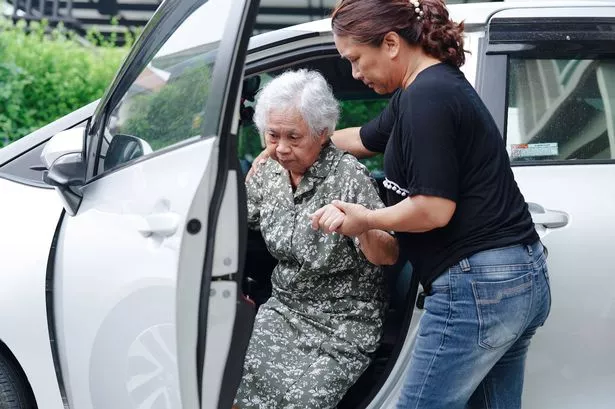Health
Discover What Walking Issues Qualify You for a Blue Badge

The Blue Badge scheme provides essential parking privileges for individuals with severe physical or mental health conditions, enabling them to park closer to their destinations. As of 2024, approximately 2.84 million Blue Badge holders are registered in England, equating to more than one in every 22 residents. Those experiencing specific mobility challenges may qualify for this important badge.
Understanding the eligibility criteria is crucial for potential applicants. According to the Government’s official guidelines, individuals may be entitled to a Blue Badge if they face any of the following circumstances: they cannot walk at all, they require assistance or mobility aids to walk, they find walking extremely difficult due to pain or breathlessness, walking presents health and safety risks, or they have a life-limiting illness that significantly impairs their ability to walk.
While meeting these criteria is essential, it does not guarantee approval. Local authorities assess applications and have the discretion to approve or deny requests based on the evidence provided. As stated on the GOV.UK website, “Your local council will decide if you are eligible for a badge. They cannot start the assessment process until they have all the necessary evidence. It may take 12 weeks or longer to assess your application.” If an application is denied, individuals can request a reassessment if they believe all relevant factors were not considered.
How to Apply for a Blue Badge
To apply for a Blue Badge, applicants must gather several important documents. These include proof of identity, proof of address, a recent head and shoulders digital photograph, and contact details, such as a phone number and email address. Acceptable forms of identity verification include a birth or adoption certificate, passport, driving licence, or marriage certificate. For proof of address, documents such as recent council tax bills, letters from government departments like the Department for Work and Pensions (DWP), or a driving licence can be submitted.
Certain individuals are automatically eligible for a Blue Badge. This includes those aged three or older who meet at least one of the following criteria: they are eligible for the higher rate of the mobility component of the Disability Living Allowance (DLA), they qualify for a Personal Independence Payment (PIP) due to an inability to walk more than 50 metres, or they are registered as severely sight impaired (blind). Additionally, individuals who receive a War Pensioners’ Mobility Supplement or have received a lump sum benefit under the Armed Forces and Reserve Forces (Compensation) Scheme may also qualify.
Other conditions may qualify an individual for a Blue Badge, but do not guarantee automatic approval. These include having a severe disability in both arms and regularly driving, having a child under three years old with a medical condition requiring bulky medical equipment, or posing a significant risk to oneself or others near vehicles. Furthermore, individuals who experience intense anxiety or fear in public spaces may also be considered for eligibility.
For more detailed information on qualifying conditions and to begin the application process, individuals can visit the official Government website. The Blue Badge scheme remains a vital resource for many, enhancing mobility and access for those in need.
-

 Entertainment2 months ago
Entertainment2 months agoAnn Ming Reflects on ITV’s ‘I Fought the Law’ Drama
-

 Entertainment3 months ago
Entertainment3 months agoKate Garraway Sells £2 Million Home Amid Financial Struggles
-

 Health2 months ago
Health2 months agoKatie Price Faces New Health Concerns After Cancer Symptoms Resurface
-

 Entertainment2 months ago
Entertainment2 months agoCoronation Street’s Carl Webster Faces Trouble with New Affairs
-

 Entertainment2 months ago
Entertainment2 months agoWhere is Tinder Swindler Simon Leviev? Latest Updates Revealed
-

 Entertainment3 months ago
Entertainment3 months agoKim Cattrall Posts Cryptic Message After HBO’s Sequel Cancellation
-

 Entertainment1 month ago
Entertainment1 month agoOlivia Attwood Opens Up About Fallout with Former Best Friend
-

 Entertainment2 months ago
Entertainment2 months agoMasterChef Faces Turmoil as Tom Kerridge Withdraws from Hosting Role
-

 Entertainment3 months ago
Entertainment3 months agoSpeculation Surrounds Home and Away as Cast Departures Mount
-

 World2 months ago
World2 months agoCole Palmer’s Mysterious Message to Kobbie Mainoo Sparks Speculation
-

 Entertainment2 months ago
Entertainment2 months agoITV’s I Fought the Law: Unraveling the True Story Behind the Drama
-

 Entertainment3 months ago
Entertainment3 months agoMarkiplier Addresses AI Controversy During Livestream Response





















